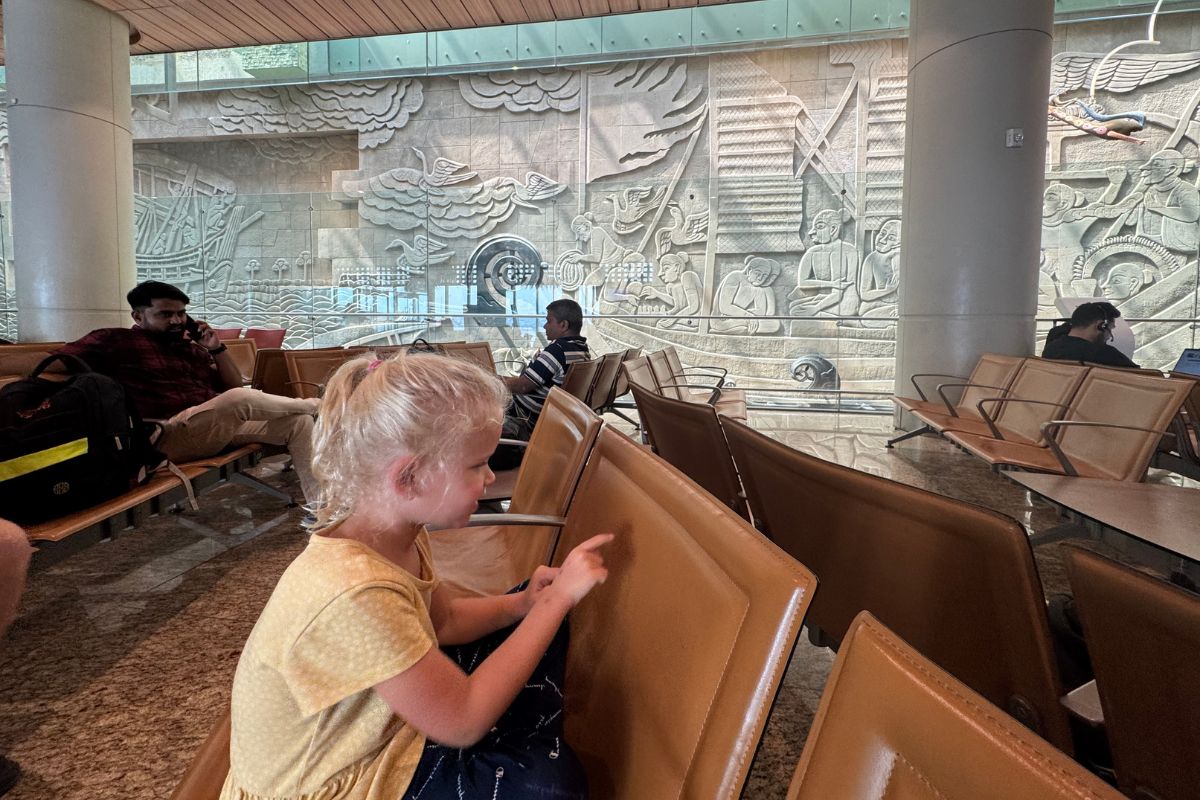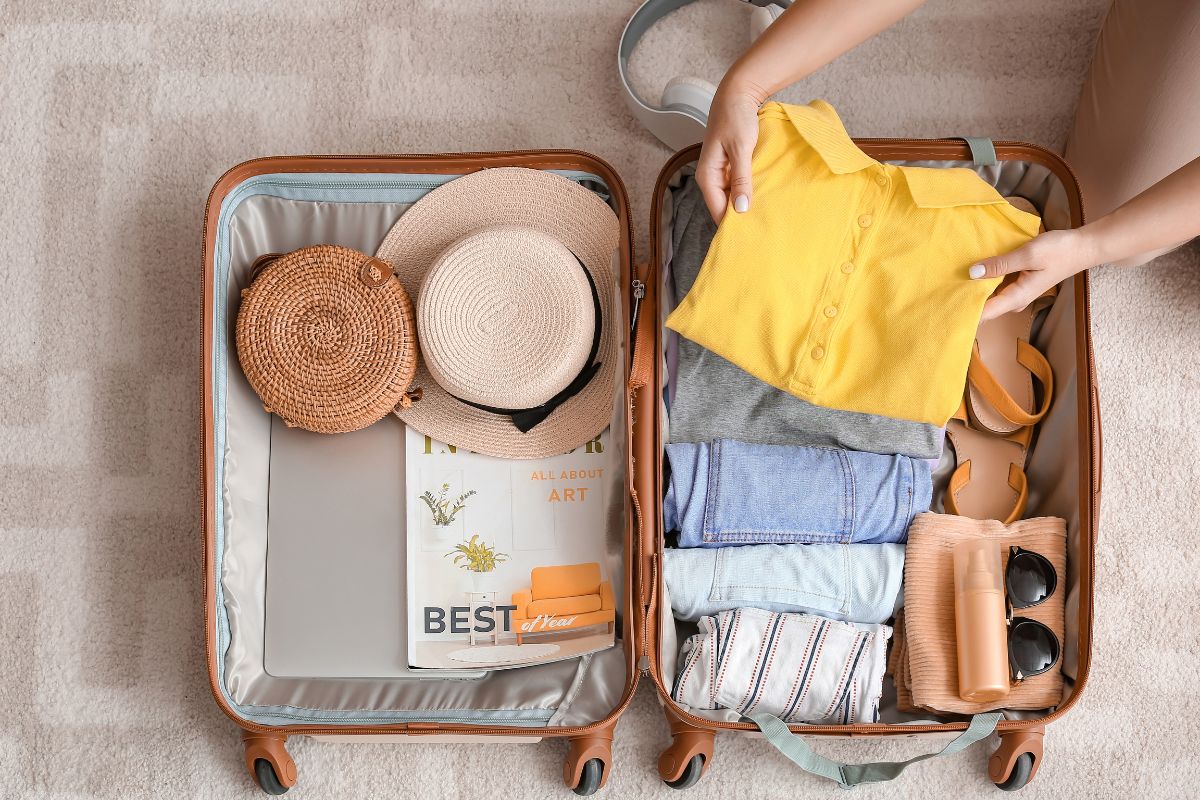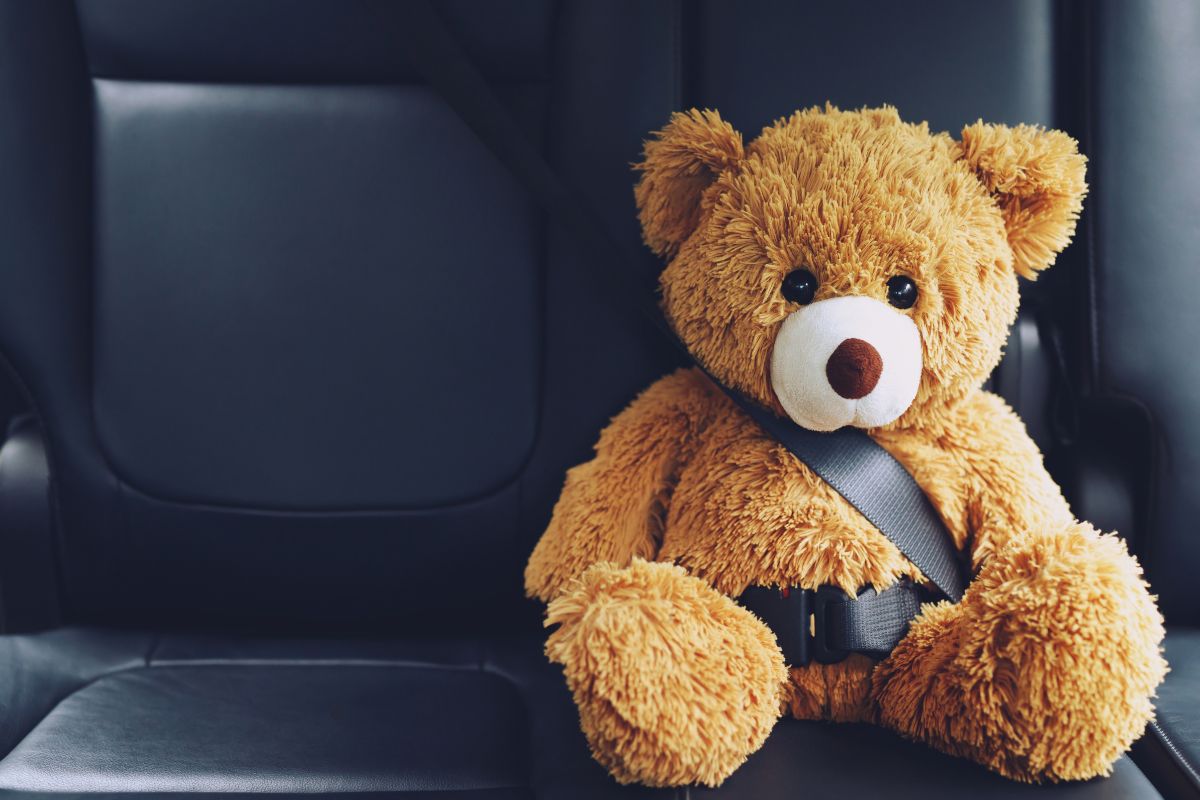Flying with kids can feel overwhelming, but with the right strategies, it can actually be an enjoyable experience. Over the years, I’ve learned that being well-prepared makes all the difference. From packing the right toys to keeping kids entertained mid-flight, I’ve put together my best tips on flying with kids that will transform the way you travel.
Whether it’s your first flight with little ones or you’re a seasoned traveler looking for smoother trips, these tips on flying with kids will help make air travel stress-free, enjoyable, and—dare I say—fun!
Preparing for a Smooth Flight with Kids
The key to flying with kids is setting expectations—for both you and them. If kids have an idea of what’s coming, they’re much less likely to feel anxious, frustrated, or overwhelmed. I’ve found that prepping ahead of time helps prevent mid-air meltdowns and makes the entire experience more manageable.
How do you prepare kids emotionally and mentally for a flight?
Before any trip, I always talk to my kids about what to expect from the moment we leave the house to when we land. I keep the conversation simple but clear.
Here’s what I cover:
- Security will take time – I explain that we’ll have to wait in line, take off shoes, and let our bags go through a scanner.
- Layovers happen – If we have a layover, I let them know we’ll have a break to walk around, eat, and relax before getting on another plane. If I don’t have exact details yet, I tell them I’ll update them once I know more.
- They can ask questions – Letting them voice their thoughts helps them feel involved and in control of their experience.
Being honest about the process reduces anxiety for both me and my kids. I never tell them a flight will be “super fun” or that “we’ll be there in no time” because if things don’t go smoothly, that can lead to disappointment. Instead, I tell them the truth: some parts of travel are boring, tiring, or frustrating, but we’ll get through it.
What’s the best way to plan flights around nap times or bedtime?
I don’t plan flights around nap times, because the reality is that kids won’t always nap when you expect them to. Some kids sleep easily on planes; others get overstimulated and fight sleep harder than they ever would at home.
Instead of focusing on nap schedules, I prioritize:
- Booking early morning flights – Morning flights tend to have fewer delays and get us moving early in the day. My kids do well with this because they wake up and jump right into “adventure mode.” And we have time to stop at the priority pass lounge for food, which is a massive help!
- Avoiding short layovers – If we have a layover, two hours is the right amount of time—long enough to grab food, let the kids run around, and use the bathroom without stress. Anything shorter than 90 minutes makes me nervous, and anything longer than three hours leads to too much downtime where kids start getting cranky.
- Being flexible with sleep – If my kids are tired, they’ll sleep, and if they don’t, I remind myself that they’ll catch up later. Some parents try to force naps on the plane, but I’ve found that forcing sleep can backfire, making kids more overtired and restless. Instead, I bring comfort items (a blanket, stuffed animal, or sleep mask) and let them decide if they want to rest.
What about red-eye flights?
I’ve taken red-eye flights with kids, and while sometimes they’re unavoidable, they’re not my first choice. Here’s why:
- Broken sleep is inevitable – Even if kids fall asleep right away, the sleep quality is poor—they wake up when the lights turn on, when flight attendants make announcements, or when turbulence shakes them awake.
- Overtired kids can be harder to handle – If my kids don’t get enough sleep, the next day is often filled with overtired meltdowns and tough transitions.
That being said, if a red-eye is my only option, I prepare for it:
Dress kids in pajamas before boarding so they’re already in sleep mode. Bring a travel pillow and blanket to make sleeping more comfortable. Stick to the bedtime routine as much as possible—read a book, give them a stuffed animal, and dim the screen time early. Be prepared for broken sleep and plan for a slow first day at our destination.
Seats on a PlaneChoosing the Best Seats for Traveling with Kids
Selecting the right seats when flying with kids can make a huge difference in how smoothly the flight goes. If you’ve ever been stuck in the middle of a row with a restless child or scrambling to trade seats with strangers, you know how important seat selection strategy is.
Over the years, I’ve learned what works and what doesn’t, and while there isn’t a perfect setup for every family, some configurations definitely make life easier.
Is it better to book an aisle or window seat for kids?
For my kids, the window seat is always the best choice. It keeps them contained and gives them something to look at. Plus, the window seat creates a built-in buffer from the aisle, reducing the chances of little hands or feet getting in the way of flight attendants or carts.
However, the aisle seat has its benefits, too, especially for younger kids who might need frequent bathroom trips. I’ve found that for very active toddlers, having an aisle seat can make it easier to get up and stretch when needed
What’s the best seat configuration for a family?
For our family, the three-in-one setup has been a game changer. Here’s how we do it:
- One parent sits with both kids in a three-seat row.
- The other parent sits directly across the aisle in the aisle seat.
This setup works because:
✔ Kids sit together and entertain each other, reducing boredom.
✔ The parent across the aisle can pass snacks, toys, or help out when needed.
✔ If one child needs to use the bathroom, the aisle parent can take them without disturbing the other.
I’ve seen families sit one parent with one child in separate rows, but I find that harder to manage. When kids sit together, they’re less likely to get bored or lonely, and it gives one parent a small break while the other handles both kids.
How do you manage seat assignments if your family isn’t sitting together?
Sometimes, despite your best efforts, airlines split up families, especially on full flights. This can be stressful, but I’ve learned a few ways to increase the chances of sitting together:
- Book flights early – The earlier you book, the more seat choices you’ll have.
- Pay for seat selection if necessary – Some airlines charge extra to pick your seats, but for peace of mind, it can be worth it.
- Check-in as soon as possible – Many airlines allow check-in 24 hours before departure, and grabbing seats early can help.
- Ask at the gate – If you’re assigned separate seats, talk to the gate agent as early as possible. They can sometimes rearrange seating to keep families together.
- Ask fellow passengers to switch – I have yet to do this, but if you’re desperate you can always ask.
Packing Essentials: What You Actually Need for the Flight
Packing for a flight with kids is all about balance—bringing everything they need while keeping things as light and organized as possible. Over the years, I’ve perfected a carry-on system that works for us every time, no matter the length of the flight.
The key to packing efficiently is only bringing what you truly need and keeping things easily accessible so you’re not digging through your bag mid-flight.
What are the most important things to pack in a carry-on for kids?
After multiple flights with my kids, I’ve created a travel toy kit that keeps them entertained without taking up too much space. The secret? Updating it before each trip so they always have something fresh to engage with.
Here’s what we always bring in our carry-on:
✔ iPad with downloaded movies and games – We pre-download content from Netflix and Disney+ so we don’t have to rely or pay for inflight entertainment when a built in screen is not an option.
✔ Yoto Player – This is a great screen-free option for listening to audiobooks and music.
✔ Headphones with volume control – I make sure they have kid-friendly, volume-limiting headphones to protect their ears.
✔ Sticker books and activity pads – My kids love these and they’re inexpensive to purchase if you have to buy them while you’re vacationing as well.
✔ Watercolor coloring books – Less mess than markers or crayons but just as fun.
✔ Compression cubes for organizing essentials – I use these to store larger toys.
✔ Extra change of clothes – Always, always pack extra clothes in your carry-on. Spills, accidents, and unexpected messes happen.
✔ Wipes and hand sanitizer – Planes can be germy and kids get messy, so I keep one in each carry on bag.
✔ Refillable water bladder – I fill these up after security to keep the kids hydrated and use a water smart filter if the water you have access to is not clean for drinking.
I also make sure to rotate small surprise toys into the bag. If we’re traveling for an extended period, I update the toys every few weeks to keep things interesting.
How do you pack efficiently while still bringing everything kids need?
Packing efficiently comes down to smart organization. I don’t just toss everything into a backpack—I use small bags within the larger carry-on to keep things accessible.
Here’s my packing system:
- Toys and entertainment go in a toiletry bag – I use a fold-up toiletry bag that can hang on the seat in front of us. This keeps everything organized and easy to grab.
- Snacks go in a separate small pouch – I use reusable silicone snack bags for easy access.
- Extra clothes and larger items go in a compression cube – This saves space and keeps things tidy.
- Electronics are in a dedicated pocket – iPads, Yoto Player, and headphones all go in one spot so they don’t get lost in the mix.
Everything stays under the seat in front of us, not in the overhead bin. The last thing I want to do is dig through overhead storage mid-flight, especially if my kids need something quickly.
Navigating Airport Security with Kids Like a Pro
Going through airport security with kids can feel like a chaotic process, but with the right approach, it doesn’t have to be stressful. I’ve been through countless security lines with my kids, and over time, I’ve developed a system that makes things as smooth as possible. The key is being organized, knowing what to expect, and preparing your kids ahead of time.
What’s the best way to get through TSA with kids without stress?
TSA lines can be unpredictable—sometimes they move quickly, and other times, they drag on with long waits and extra screening. Kids can get impatient, so I always follow these three main rules:
- Have everything organized before you get to security.
- I pack our carry-on in a way that makes screening fast. That means:
- Electronics (iPads, Yoto Player) in one easy-to-reach section.
- Liquids (if any) in a clear quart-sized bag at the top of my backpack.
- Shoes that slip on and off easily—no complicated laces or buckles.
- I pack our carry-on in a way that makes screening fast. That means:
- No loose liquids—only sealed snacks.
-
- TSA allows solid food, so I stick with pre-packaged snacks like granola bars and almonds.
- Anything that resembles a liquid (yogurt pouches, applesauce, etc.) needs to follow the 3.4 oz rule unless it falls under the baby/toddler exemption.
- I always put all snacks in one easy-to-access pouch so I don’t have to dig around.
- Prepare your kids to walk through security independently.
-
- I explain to them ahead of time that they will need to remove their shoes and walk through on their own unless they are small enough to be carried.
- I remind them not to bring any toys or random items in their pockets—things like small figurines or coins can trigger extra screening.
One thing I’ve learned: Don’t rush. TSA agents are used to families going through security, and stressing out won’t make things go faster. Instead, I take my time, talk my kids through each step, and keep everything as predictable as possible.
PRO Tip: We used this credit card to get Global Entry, which also gets you TSA Pre-Check which is a life saver with kids. This credit card also gets you Priority Pass Lounge access to many airports worldwide.
Can I bring baby formula or breast milk through security?
Yes! TSA has special rules for traveling with baby formula and breast milk for infants and toddlers. Unlike regular liquids, these items are not subject to the 3.4 oz rule—you can bring as much as you need.
That said, TSA may test your liquids, and this is where I learned an important lesson the hard way.
One time, I brought a bottle of formula, and TSA tested it. I didn’t realize that some formula expires quickly after being opened, and after testing, my baby refused to drink it.
Keeping Kids Entertained and Happy on the Plane
Keeping kids entertained on a flight is one of the biggest challenges of traveling as a parent. I’ve learned that bored kids = restless kids, and the key to a smooth flight is having the right activities ready to go.
I always pack a mix of screen-free entertainment and digital options, rotating between different activities to keep my kids engaged. The trick is having a variety of small, easy-to-pack items that don’t require too much effort on my part.
What are the best screen-free activities for kids on a flight?
I always bring a dedicated travel toy kit that includes a mix of quiet, mess-free, and engaging activities. I update this before every flight to keep things fresh.
Here’s what works best for us:
- Sticker books – I always bring reusable or peel-and-stick sticker books. My kids love making their own little scenes, and it keeps them occupied for a long time.
- Watercolor coloring books – These are game-changers because they use a refillable water brush instead of messy crayons or markers.
- Yoto Player – My kids love listening to audiobooks, and the Yoto Player is perfect because they can choose their own stories without a screen.
- Small puzzles or magnetic games – I bring compact magnetic puzzle boards or matching games that won’t slide off the tray table.
- Activity books with mazes and dot-to-dots – Simple but effective, these keep little hands busy without needing a ton of supplies.
I rotate between these activities so my kids don’t get bored with just one thing.
Surviving Takeoff and Landing with Kids
Takeoff and landing can be the toughest parts of a flight for kids, especially if they experience ear pain due to pressure changes. Over the years, I’ve learned that prevention is key, and I always have a plan in place to help my kids stay comfortable.
What are the best ways to help kids avoid ear pain?
Air pressure changes can cause discomfort because kids’ Eustachian tubes (the small passages between the middle ear and throat) are narrower than adults’, making it harder for them to equalize pressure.
I’ve found a few tried-and-true methods that help prevent ear pain during takeoff and landing:
- Encourage swallowing and chewing.
- Swallowing frequently helps open the Eustachian tubes, equalizing pressure.
- You can consider packing gummies, fruit snacks, or lollipops if you’re child is unable to do this on their own during ascends and descends.
- Teach them to “pop” their ears.
- I show my kids how to yawn or do a slow, exaggerated swallow.
- The “hold your nose and blow” trick (Valsalva maneuver) works for older kids, but I don’t recommend it for toddlers since they might blow too hard.
- Use a pacifier or straw for little ones.
-
- If my toddler isn’t drinking from a bottle, I give her a pacifier or encourage her to sip from a straw.
- If they’re congested, clear their nose beforehand.
-
- This is crucial. If my kids are even a little stuffy, I use a saline spray and a snot sucker (like the NoseFrida) before boarding.
Handling Snacks and Mealtime in the Air
Flying with kids means always having food on hand. Snacks can be a lifesaver when dealing with boredom, hunger, or even preventing mid-air meltdowns. I’ve learned that packing the right snacks makes a big difference—both in keeping my kids happy and in keeping the mess to a minimum.
What are the best snack ideas that are mess-free and kid-friendly?
I always look for snacks that are easy to eat, won’t create a sticky mess, and don’t require refrigeration. Through trial and error, I’ve found that these are the best options for flights:
✔ Almonds and cashews – No crumbs, no mess, and great for a protein boost.
✔ Apples – I cut them into slices and pack them in a silicone snack bag. They last well and aren’t messy.
✔ Granola bars – I go for the non-crumbly ones to avoid a mess in the seat.
✔ Cheese sticks – They stay fresh long enough and don’t have a strong smell.
✔ Crackers or pretzels – I portion these out in small reusable bags to prevent spills.
✔ Mini sandwiches – If it’s a longer flight, I’ll pack peanut butter & jelly and cut into smaller pieces.
I use silicon reusable snack bags instead of plastic bags because they keep things organized and take up less space in my bag once empty.
Managing Meltdowns and Mid-Air Challenges
Even with the best preparation, kids will have moments on a flight. Whether it’s a tantrum, a sibling squabble, or just general restlessness, it’s important to stay calm and have a plan. I’ve been through it all—overtired toddlers losing it mid-flight, sibling bickering over whose turn it is to hold the iPad, and that moment when a child just wants off the plane, right now.
The key to handling these moments is being proactive and knowing when to intervene.
What’s your best advice for dealing with tantrums on a plane?
A meltdown on a plane feels 10 times more stressful than one at home, but I’ve learned that the best way to handle it is to stay calm and focus on diffusing the situation.
Here’s what works for us:
Take a walk down the aisle.
- If it’s safe to do so, a quick walk to the back of the plane can reset their mood. Moving their body helps break the frustration cycle.
- If my toddler starts melting down, I take them to the galley area, where it’s quieter. Sometimes, a simple change of scenery helps.
Break out a secret hidden toy.
- I always pack one or two surprise toys in my bag—something small they haven’t seen before.
- These have saved me when my kids were on the verge of losing it. It redirects their attention instantly.
Use distraction techniques.
- Pointing out something interesting outside the window, giving them a new snack, or playing a simple game like “I Spy.”
✔ Acknowledge their feelings.
- I don’t try to talk them out of their frustration—I acknowledge it and then shift focus. Saying, “I know you’re tired and this is really hard. Let’s take a deep breath together” is much more effective than, “Stop crying.”
✔ Accept that sometimes, you just have to ride it out.
- Some meltdowns can’t be fixed right away. If that happens, I do my best to comfort them and remind myself that other people will survive hearing a crying child for a few minutes.
Dealing with Jet Lag and Sleep Issues After a Flight
Jet lag is tough on everyone, but it can hit kids even harder since their bodies rely so much on routine. Over the years, I’ve learned that helping kids adjust to a new time zone quickly makes travel easier for everyone. The goal is to reset their internal clock as soon as possible while keeping meltdowns to a minimum.
What are your best tips for helping kids adjust to new time zones?
I follow a few key rules to help my kids adapt faster:
Hydration is key
- Traveling dehydrates everyone, and dehydration can make jet lag worse.
- I push water over juice and make sure the kids drink throughout the flight and after we land.
If we arrive in the morning, we push through the day—no naps!
- This is the hardest part, but forcing ourselves to stay awake until bedtime in the new time zone is the fastest way to adjust.
- If my kids absolutely can’t stay awake, I let them nap for no more than an hour to avoid throwing off bedtime.
Stick to bedtime routines, even in a new place
- This has been a game-changer for us. Keeping bedtime as close to normal as possible helps my kids adjust faster.
- I always bring:
- A portable sound machine (familiar sounds help them sleep).
- A small comfort item (stuffed animal or blanket).
- Books we read at home (this cues them that it’s time for bed).
What about long-haul flights that cross multiple time zones?
For flights that cross 6+ time zones, I start adjusting a little before we even leave:
- A few days before departure, I shift bedtime and wake-up time by 30 minutes per day to get them closer to the destination’s time zone.
- On the flight, I switch to the new time zone immediately—we eat, sleep, and do activities based on the destination’s time.
- I let natural light do the work—getting outside in the sunlight during the day is one of the fastest ways to adjust.
Bonus Travel Hacks to Make Flying with Kids Easier
Do you have any secret travel hacks most parents don’t know?
✔ Compression bags for organizing toys & clothes
✔ Always bring a portable sound machine
✔ A hidden “surprise toy” works wonders in emergencies
If you could give one ultimate piece of advice for parents flying with kids, what would it be?
Kids feed off your energy. If you’re calm and prepared, they will be too. Expect things to go wrong, but know that you can handle it. At the end of the day, you’re making amazing memories together!
More on the Blog:
Why we took a family gap year?








